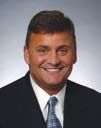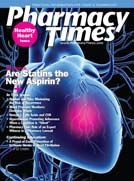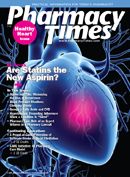Publication
Article
Pharmacy Times
From the Publisher: Keeping Hearts Healthy: The Pharmacist's Role
Author(s):
Pharmacists meet day in and day out with patients who are dealing with heart diseases. Some struggle with an inherited condition, others discovered that certain lifestyles caused problems, but no matter how they got there, these people are in need of guidance, information, and hope. Today, coronary heart disease is the number-1 cause of death in the United States, with stroke following as the number-3 cause of death and serious disability. Diabetes, high cholesterol, obesity, stress, and tobacco intake— these and other causes all contribute to the various manifestations of heart disease that cross all socioeconomic layers throughout the country.

An interesting study released in the August 2009 issue of the journal Circulation: Heart Failure reports on the special role the pharmacist can—and does—take in the heart health of patients. Australian researchers described a collaborative model for ensuring heart failure patients take their medicines properly, and here’s where the pharmacist came in. The rate of hospitalization was cut by an impressive 45% in the first year of these patients taking part in a collaborative “medicines review service.” What did this entail? The doctor-pharmacist partnership called for the pharmacist to make actual house calls, going to patients’ homes and asking them to bring out all their prescription and nonprescription medications from their medicine cabinets.
Pharmacists were able to detect problems arising from underdosing and overdosing, using old prescriptions, and by analyzing the vitamins and OTC medications that were in the mix for that particular patient. The home interview concluded with a report to the general practitioner and a follow-up by the physician. Not only did this study underline a novel way in which the pharmacist and physician could collaborate, it also indicated that investing in improvements in medication management can reduce costs and avoid expensive hospital stays for heart patients. And while American pharmacists may not be making house calls anytime soon, they are already consistently interviewing and counseling individuals on heart health. Conducted in private areas of their practice, these sessions are stimulating valuable dialogue and providing potentially life-saving information about the patient’s adherence and attitudes.
Our Healthy Heart issue is here to educate and help in a variety of ways, bringing you fresh information about blood pressure monitors and omega-3 fatty acids (see OTC Focus on pages 20 and 26), statin therapy (see Rx Focus on page 36), and “Stroke and TIAs—Minimizing the Risk of Recurrence” (see page 72). Perhaps our Counseling Focus, “Hypertension: Promoting Adherence When a Condition Is ‘Silent,’” goes to the heart of the matter. It details the specific steps pharmacists can take in educating patients about lifestyle changes, medication adherence, and home monitoring—all in the effort to keep our hearts healthy.
Thank you for reading!

Mike Hennessy








